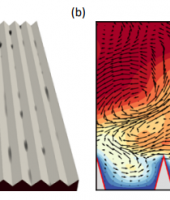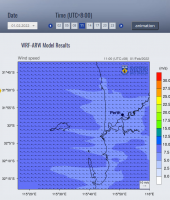Modelling the effect of varitions in the thickness and density of the lowerest mantle chemical layer
Geological observations suggest a gradual reduction in the supercontinent life span—the longest survival time of the oldest supercontinent Nuna is ~300 million years (Myrs), but it reduced to ~150 Myrs for the latest supercontinent Pangea. The controlling factor for the life spans of supercontinents is unknown. However, parameters include the thickness (and density) of the lower mantle thermo-chemical layer, the internal heating rate of the mantle, and the strength of orogens and oceanic lithosphere, which affect the plate-mantle coupling process, are possible. This project uses numerical simulations to test how the temporal changes in mantle's physical properties, especially in the bottom mantle layer's thickness and density, may impact the supercontinent cycles, including the longevity of a supercontinent and how it gets assembled. This project is part of the ARC fellowship project of ZXL.
Area of science
Geoscience
Systems used
Magnus
Applications used
CitcomSThe Challenge
The numerical simulation’s biggest challenge is setting up models that allow the Earth-like stiff continental plates to assemble and dispersal self-consistently with the coupled underlying mantle flow. It is considerable progress compared with the previous modelling, which usually chooses an artificial stress threshold in the continents as the break-up time of cratons, but no visually continental drift after dispersal be observed.
The Solution
Geologically, the weak orogens formed between cratons during the amalgamation of continents guided the future dispersal of a supercontinent. In this work, we mimic the formation of orogens in our models by changing the composition of oceans which are located in gaps between moving-together continental plates (gap width < 300 km but will elongate to regions with gap width < 600 km) to orogen identified materials. We also consider an additional orogenesis event inside the supercontinent at supercontinent formation time to close all the minor oceans (width < 1500 km) in it, to mimic the extensively existing mountain building events around the supercontinent formation time in geological records.
The Outcome
Using 192 cores simultaneously in Pawsey Magnus, the computation time for one typical case is within 20 hours (i.e., less than one day), which makes testing the vast parameter space possible. Also, Pawsey remote visualisation saves much time visualising the outputted data since there is no need to transfer data from the server to the client.






